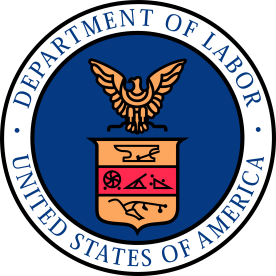On April 1, 2020, the Wage and Hour Division of the Department of Labor (“DOL”) issued temporary regulations (“Regulations”) to implement the Public Health Emergency Leave (“Emergency FMLA Leave”) and Emergency Paid Sick Leave (“Paid Sick Leave”) benefits available under the Families First Coronavirus Response Act (“the “Act”). The Regulations took immediate effect, on the effective date of the Act, and remain in effect through December 31, 2020, when the Act expires.
The Regulations (here) expand on the DOL’s guidance or “Families First Coronavirus Response Act: Questions and Answers,” which were issued late the week of March 23 and updated over the following weekend. In some instances, the Regulations are inconsistent with the DOL’s former guidance – particularly with regard to:
(1) The reasons an employee may take Paid Sick Leave,
(2) The applicability of the integrated employer and joint employer tests which are used to determine the number of employees for purposes of coverage under the Act, and
(3) The documentation employers may request to determine an employee’s eligibility for leave under the Act.
The DOL updated its previous guidance or Questions and Answers on April 1, 2020 (here), to conform to the Regulations.
A brief summary of several sections that (1) depart from the DOL’s former guidance or (2) provide new information the DOL did not previously address is below.
Government Orders
The Regulations expand the qualifying reasons for Paid Sick Leave to include containment, shelter-in-place and stay-at-home orders. However, an employee is only entitled to Paid Sick Leave if the order “cause[s] the Employee to be unable to work even though his or her Employer has work that the Employee could perform but for the order.”
Significantly, the Regulations further broaden “Subject to a Quarantine or Isolation Order” to include:
when a Federal, State, or local government authority has advised categories of citizens (e.g., of certain age ranges or of certain medical conditions) to shelter in place, stay at home, isolate, or quarantine, causing those categories of Employees to be unable to work even though their Employers have work for them.
Advice to Self-Quarantine
The Regulations state that an employee has been “advised by a health care provider to self-quarantine due to COVID-19 concerns” for purposes of Paid Sick Leave if:
(i) A health care provider advises the Employee to self-quarantine based on a belief that—
(A) the Employee has COVID-19;
(B) the Employee may have COVID-19; or
(C) the Employee is particularly vulnerable to COVID-19; and
(ii) following the advice of a health care provider to self-quarantine prevents the Employee from being able to work, either at the Employee’s normal workplace or by Telework.
Similarly, the Regulations provide that an employee may take Paid Sick Leave to care for another who has received any of the same recommendations. On that point, the Regulations explain that to qualify for Paid Sick Leave, the other person must be:
an Employee’s immediate family member, a person who regularly resides in the Employee’s home, or a similar person with whom the Employee has a relationship that creates an expectation that the Employee would care for the person if he or she were quarantined or self-quarantined. For this purpose, ‘individual’ does not include persons with whom the Employee has no personal relationship.
Seeking a Diagnosis
With respect to people who suspect that they are ill, the Regulations clarify that if an employee is taking leave because they are “experiencing COVID-19 symptoms and seeking medical diagnosis,” the employee’s Paid Sick Leave “is limited to the time the Employee is unable to work because the Employee is taking affirmative steps to obtain a medical diagnosis, such as making, waiting for, or attending an appointment for a test.”
Employer Coverage
The Regulations provide that all common employees of joint employers or all employees of integrated employers must be counted together to determine coverage under the Act. We have covered this issue in more detail here.
Notice of Need for Leave and Documentation of Need for Leave
The Regulations regarding documentation of the need for leave are a departure from the DOL’s former guidance, which suggested that an employer could require a variety of documents with a request for Paid Sick Leave or Emergency FMLA Leave. The Regulations provide that an employer may not require a notice of the need for leave to include documentation beyond what is listed below.
-
Before taking either Paid Sick Leave or Emergency FMLA Leave, all employees must give their employers documentation that includes:
(1) The employee’s name;
(2) The date(s) for which leave is requested;
(3) The qualifying reason for the leave; and
(4) A written or oral statement that the employee is unable to work because of the qualifying reason for leave.
-
Before taking a Paid Sick Leave or Emergency FMLA Leave, some employees must additionally provide:
o For an employee subject to a federal, state or local quarantine or isolation order related to COVID-19: the name of the government entity that issued the Quarantine or Isolation Order
o For an employee advised by a health care provider to self-quarantine due to COVID-19 concerns: the name of the health care provider who advised the employee to self-quarantine due to concerns related to COVID-19.
o For an employee caring for an individual subject to a federal, state or local quarantine or isolation order or a health care provider’s advice to self-quarantine due to COVID-19 concerns: either (a) the name of the government entity that issued the Quarantine or Isolation Order to which the individual being cared for is subject or (b) the name of the health care provider who advised the individual being cared for to self-quarantine due to concerns related to COVID-19.
o For an employee caring for the employee’s child whose school or place of care is closed or the child’s care provider is unavailable due to a public health emergency) or Emergency FMLA Leave: the name of the employee’s child (or children), the name of the closed or unavailable school or child care provider, and a representation that no other suitable person will care for the employee’s child when the employee takes Paid Sick Leave or Emergency FMLA Leave.
In addition to the information specifically identified, the Regulations generally state that an employer may request that an employee provide additional material as needed to support the employer’s request for tax credits pursuant to the Act. And, the Regulations state that employers are not required to provide an employee’s request for leave if the employee fails to provide materials sufficient to support the applicable tax credit. With respect to documents required for tax credits, the Regulations refer to https://www.irs.gov/newsroom/covid-19-related-tax-credits-for-required-paid-leave-provided-by-small-and-midsize-businesses-faqs (“IRS FAQs”) for more information.
Significantly, neither the Regulations nor the IRS FAQs specify any additional information employees must provide an employer to take Paid Sick Leave based on experiencing COVID-19 symptoms and seeking medical diagnosis or for employees experiencing any other substantially similar condition specified by the federal government.
While the Regulations answer questions about the process of requesting leave under the Act, the Regulations leave open questions about:
-
Whether employers can require additional documentation substantiating the need for leave after a Paid Sick Leave or Emergency FMLA Leave is approved.
-
Whether the DOL will issue additional Regulations or the IRS will issue additional guidance on the documentation process in the coming weeks.
Recordkeeping
Finally, under the Regulations, an employer must:
-
Retain all documentation related to an employee’s request for or entitlement to Paid Sick Leave or Emergency FMLA Leave for four years, regardless of whether the leave was granted or denied.
-
Document and keep any oral statements an employee provided to support a request for Paid Sick Leave or Emergency FMLA Leave for four years.
-
Have an authorized officer document that the employer is eligible for the small employer exemption to the Act when the employer denies an employee’s request for Paid Sick Leave or Emergency FMLA Leave (and keep such documentation for four years). Notably, the Regulations provide that a small employer must post a notice regarding the Act, even if the employer determines that it is exempt.








 i
i


